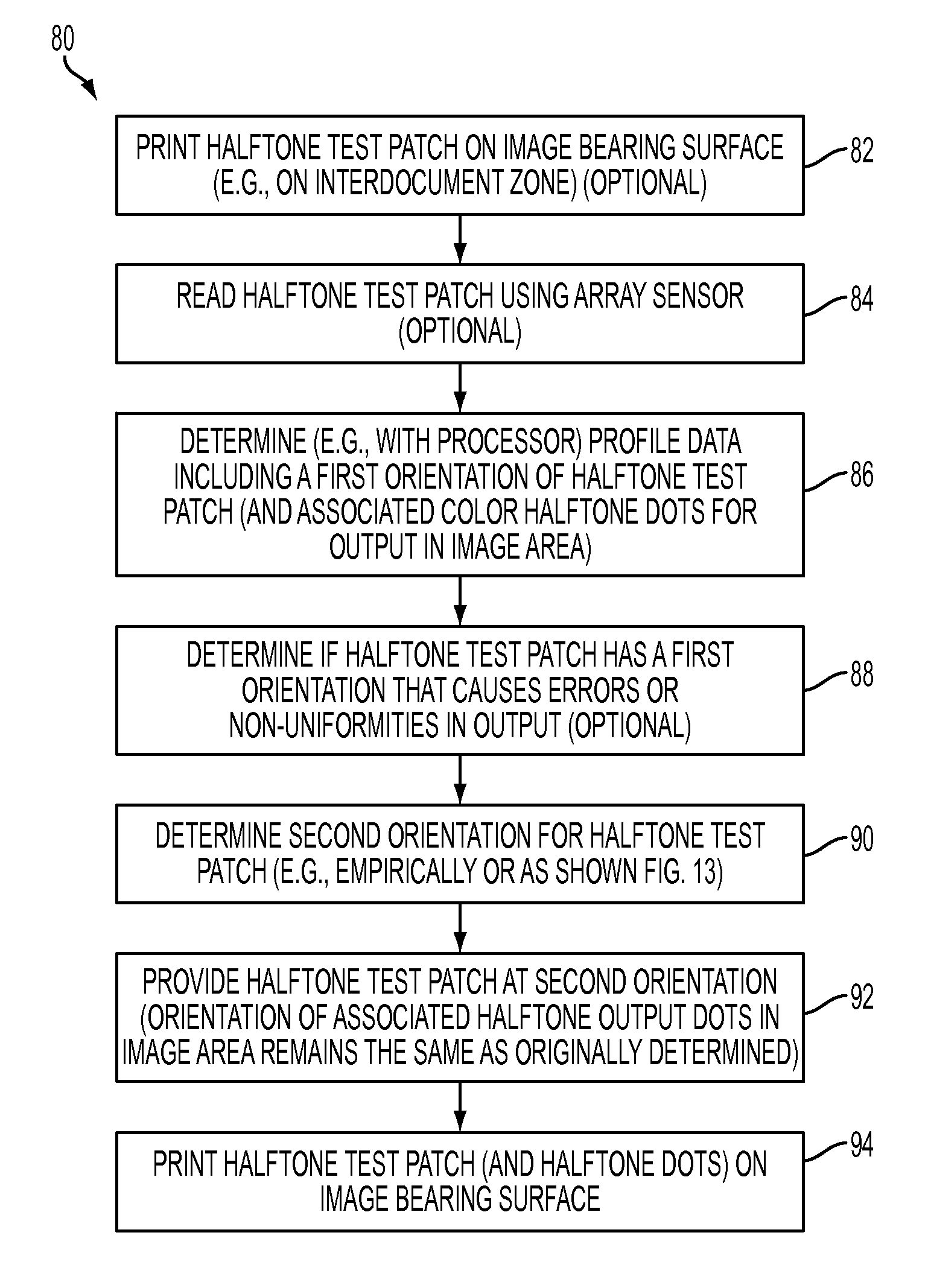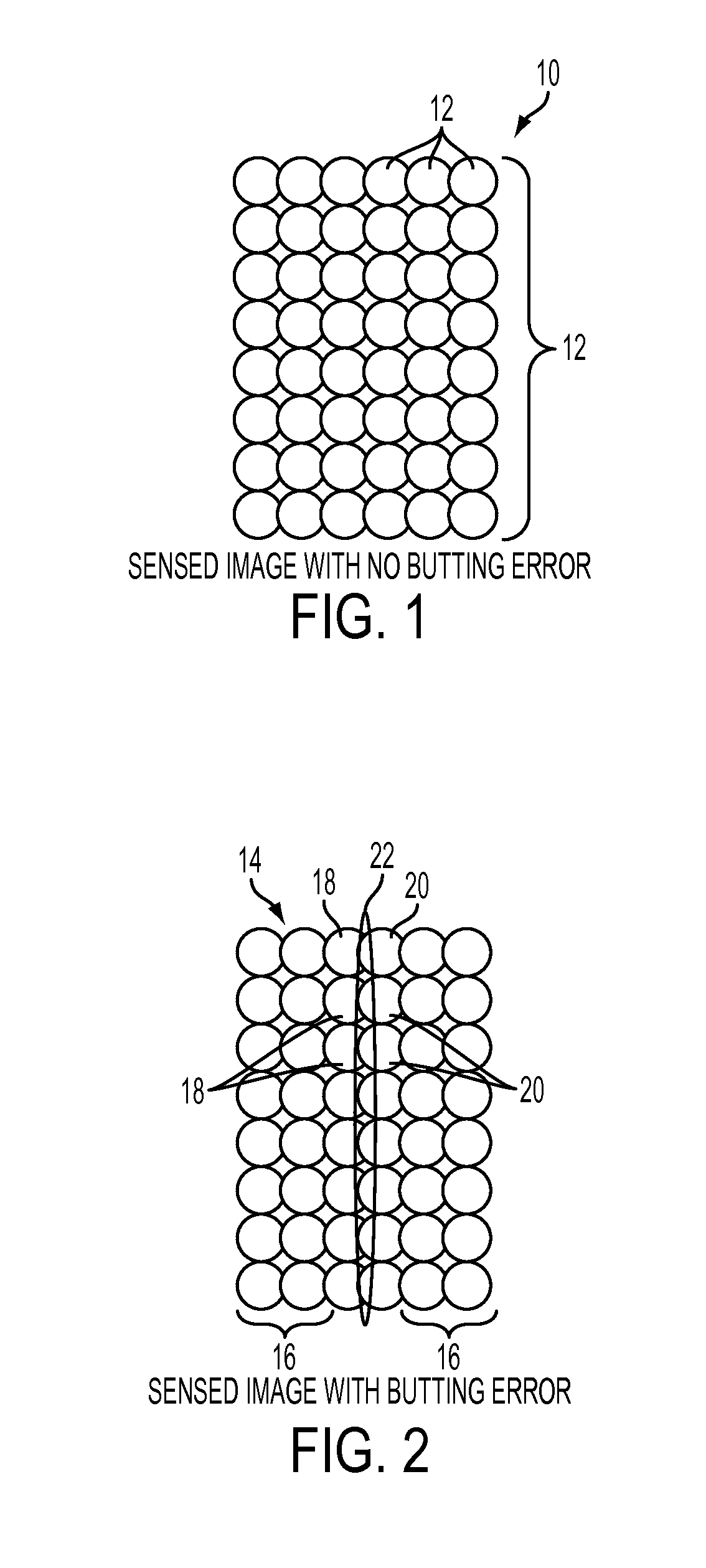Method and system for minimizing non-uniformities in output images using halftone correction patches
a technology of non-uniformity and output image, which is applied in the field of method and system for minimizing non-uniformities in output image using halftone correction patches, can solve the problems of output image streaks and non-uniformities, spatial position errors, errors or non-uniformities still present, etc., and achieve the effect of minimizing cross-process direction non-uniformities
- Summary
- Abstract
- Description
- Claims
- Application Information
AI Technical Summary
Benefits of technology
Problems solved by technology
Method used
Image
Examples
Embodiment Construction
)
[0034]When printing color images using halftones, an output image that has uniform output is desirable. For example, FIG. 1 illustrates a detailed view of a part of an output image 10 generated by an electronic printing apparatus comprising a plurality of halftone dots 12 printed in a uniform manner and having no butting error or non-uniformities. Such uniform dots 12 will appear as a single color (or an alternate color if overlapped with one or more other colors) to the human eye on a printed document. Each color that is output may be printed at a different angle or orientation with respect to the other colors (and possibly overlay each other) which is not visible to the human eye. For example, cyan (C), magenta (M), and yellow (Y) dots may be oriented at 30, 50, and 70 degrees, respectively, and black (K) dots may be oriented at 0 or 90 degrees in an image for output. The printing and overlay of each color at a different orientation is known to produce better quality output image...
PUM
 Login to View More
Login to View More Abstract
Description
Claims
Application Information
 Login to View More
Login to View More - R&D
- Intellectual Property
- Life Sciences
- Materials
- Tech Scout
- Unparalleled Data Quality
- Higher Quality Content
- 60% Fewer Hallucinations
Browse by: Latest US Patents, China's latest patents, Technical Efficacy Thesaurus, Application Domain, Technology Topic, Popular Technical Reports.
© 2025 PatSnap. All rights reserved.Legal|Privacy policy|Modern Slavery Act Transparency Statement|Sitemap|About US| Contact US: help@patsnap.com



